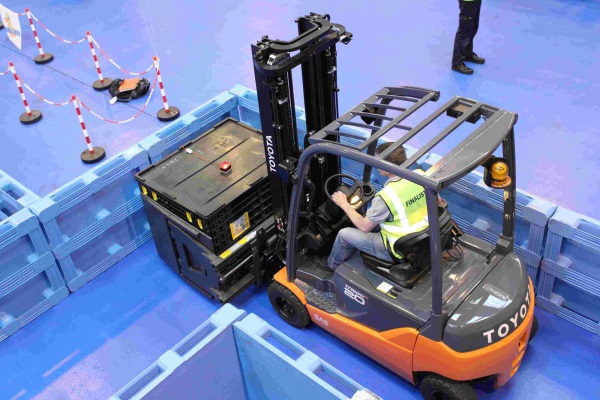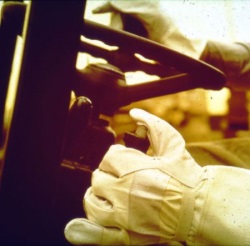Forklift Training Information
The largest forklift operator training website in the world
![]()
![]()
Training And Testing In The Early Days
The previous page deal with how the RTITB came to be involved if forklift operator training.
In the early days of training, trucks were nothing like what are available today. Very few had power assisted steering and some were real beasts to steer especially when carrying out slow manoeuvres. Electric trucks were contactor controlled and when you pressed the accelerator the truck tended to lunge in the direction of travel selected.
Some of the engine powered counterbalanced trucks had automatic gear boxes and when you engaged drive there was a pause before the truck moved. During the pause, novices tended to press the accelerator pedal harder so when drive engaged, the truck could leap off.
There was a mix of different types of accelerator control. Twist grip like a motor cycle. Other trucks used rocker pedals so on one you pressed your toe down to go forward and your heel to reverse. On another you rocked the pedal on its right or left hand side. Some had two pedals, one for forward and one for reverse. There was one where one took ones foot off the accelerator pedal to apply the brakes This mix of non-automotive controls always caused problems for novices, even those who could drive cars and accidents had occurred during training especially when teaching stacking and de=stacking in confined spaces, narrow aisles etc.
 Because of this, the RTITB decided that to reduce the risk of accidents during training making it a rule that novice operators should apply the parking brake when using the hydraulic controls at the face of a load, stack or rack etc., Naturally this requirement got built into the Practical Test
Because of this, the RTITB decided that to reduce the risk of accidents during training making it a rule that novice operators should apply the parking brake when using the hydraulic controls at the face of a load, stack or rack etc., Naturally this requirement got built into the Practical Test
There was a stated intention to create a bridging course to bring the new novice operator up to a fully skilled standard once they had gained some experience in the work place. Unfortunately the bridging course never materialised largely because no one had time to think about it. Basic training and retraining existing, untrained operators took off. A new industry had been created. The RTITB course got set in stone because the standards were published and imposed on Instructors and the ensuing RTITB Instructor Registration Scheme and ultimately underpinned the HSE's Approved Code Of Practice. This standard and its test became the only standard for novices, experienced operators and instructors alike.
Only the Construction Industry Training Board (CITB) and The Agricultural Training Board (ATB) did not accept the RTITB standards. They claimed that their training needs were special because of their industries. (Webmaster note: And that's why you have to apply the handbrake before using the hydraulic controls on a forklift test}